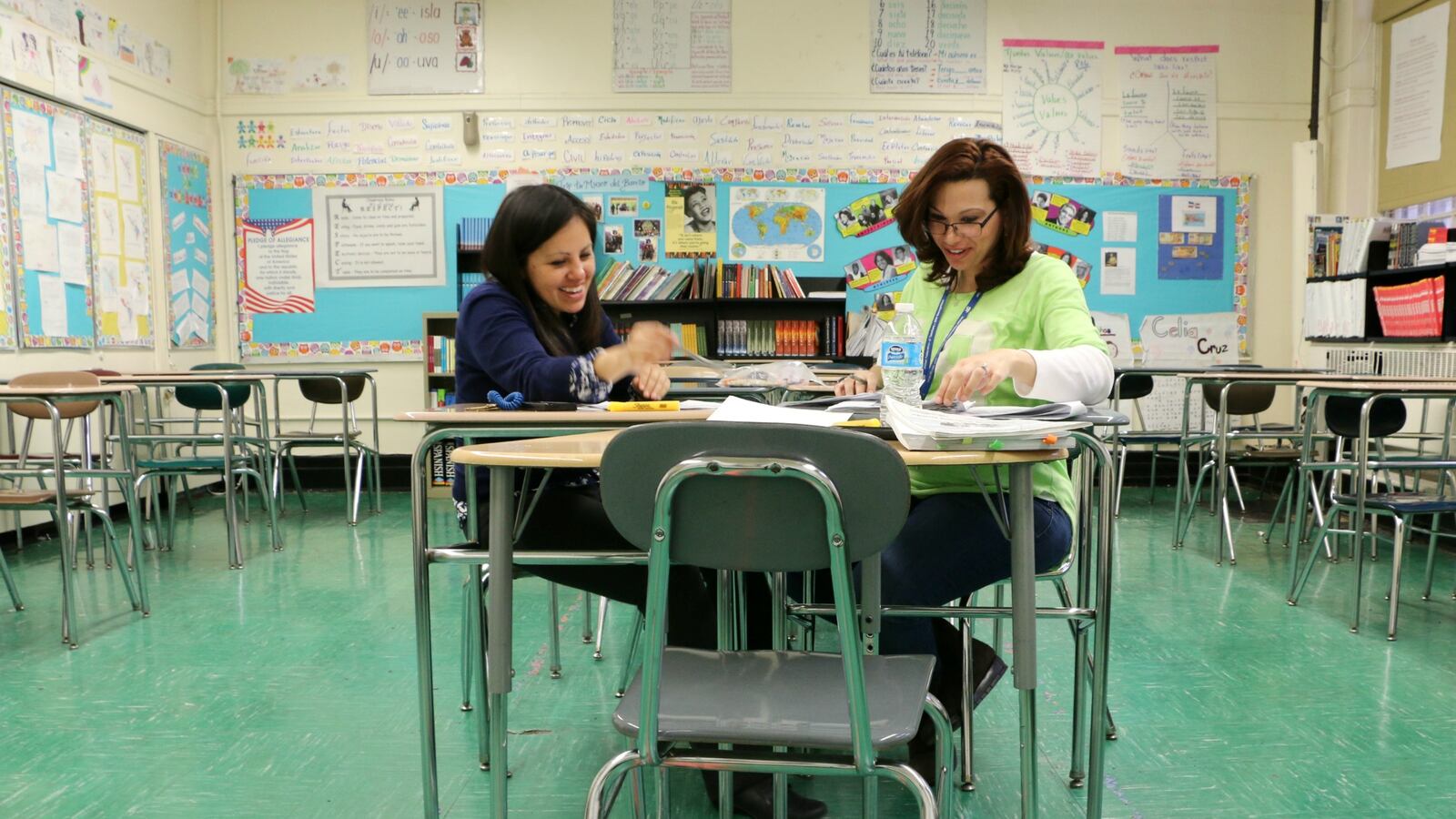In the largest effort of its kind, Mayor Bill de Blasio has stocked over 200 high-needs schools with an array of social services that he hopes can overcome the effects of poverty and improve student learning.
The initiative has cost the city hundreds of millions of dollars and attracted the attention of districts across the country that are interested in so-called “community schools.”
So how is this costly and complex experiment working?
Pretty well — despite some ongoing challenges, according to a Rand Corporation study released Wednesday, the first attempt to answer that high-stakes question.
The city-commissioned report focuses on 118 community schools over the previous two school years and includes 88 schools that are also part of the city’s “Renewal” program — a high-profile effort to use the community-school model to revamp chronically low-performing schools.
The 115-page report does not assess whether the community schools are improving outcomes for students, which will be the subject of a follow-up study set to be released in 2019. But Wednesday’s report, which offers a mostly positive view of the effort, does provide a glimpse into the ways in which the city’s massive investment is spurring change in schools.
Here are five takeaways — you can read the report in full here.
The schools are finding new ways to help students.
All community schools are expected to lengthen their day by an hour, make sure students who repeatedly miss school don’t slip through the cracks, and work with nonprofit organizations to offer a range of social services for students and their families.
For the most part, that’s what’s happening, the report found.
Over 90 percent of schools in the study have used the extra time to offer programs ranging from film clubs to test prep, compared with 59 percent before the program gained steam. Seventy-eight percent of community schools have deployed mentors to prevent students from becoming chronically absent (up from 41 percent before the program), and 80 percent of school leaders said they had successfully partnered with outside groups.
Principals are forming new partnerships — but those take a lot of time.
While most school leaders said they enjoyed strong relationships with their nonprofit partners and the “community school directors” who coordinate the new services, some worried that managing those partnerships distracts from their core duty: overseeing classroom instruction.
“The most-cited challenge that schools reported facing,” the report says, “was pressure from competing priorities for time and effort.”
The researchers found that things got even worse when there was a “lack of trust” between the principal and community school director. “Without a strong working relationship between these two leaders, both will likely find the roles more challenging,” the report says.
In one infamous clash, a principal tried to end a partnership with a nonprofit organization, effectively threatening to kick them out of the building.
Some partnerships suffer from staff turnover.
High turnover among school and nonprofit staff has undermined the new partnerships at some community schools, the report found. About half of schools said in a survey that turnover was a challenge.
“At some schools, relationships between school and [nonprofit] staff were strained mainly in situations where there was high staff turnover among the school and/or [nonprofit] staff,” the report says.
Turnover has been a particular challenge among the leadership at Renewal schools, where nearly 60 percent of schools have a new principal than when the program started three years ago.
Renewal schools are trying lots of new things — even as their principals juggle tons of mandates.
Community schools that are also in the high-stakes Renewal program tended to launch the most “interventions,” which range from mentoring programs to mental health referrals.
Several leaders of Renewal schools, which are under extra pressure to show academic gains, said their schools benefitted from participating in both programs.
But some principals also complained about unclear guidance from the education department and all the competing demands thrown their way.
“I think that there’s just a disconnect and there needs to be a real understanding of how much time do we have in a school day, in a school year,” said an anonymous school leader quoted in the report. “We’re mandated to do a lot of different things and every mandate takes away from doing the things that you might want to do on the school level.”
Overall, the report paints an encouraging picture of the community schools program.
Though the authors note that it’s too early to draw conclusions about the program’s success, they generally say that it’s on the right track.
They also repeatedly cite school-level leaders who said they can see a real difference in their schools.
“The idea of supporting the entire family, as opposed to just looking at the child, it does so much,” one principal is quoted as saying. “It says to the family, we’re here to do whatever we can to work with you to improve your child’s academic success.”

